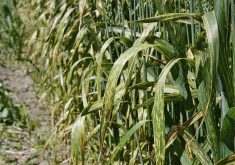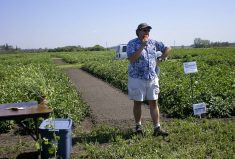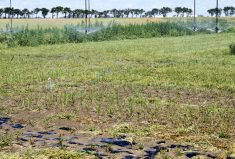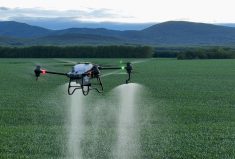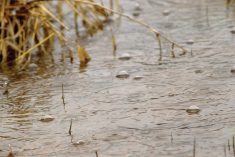We’re hearing more and more about producers conducting their own on-farm trials to sharpen their management decisions.
And it makes sense. Before committing to a practice, product, or variety, many growers want to see results on their own land.
But on-farm trials demand time, resources, and determination.
Read Also
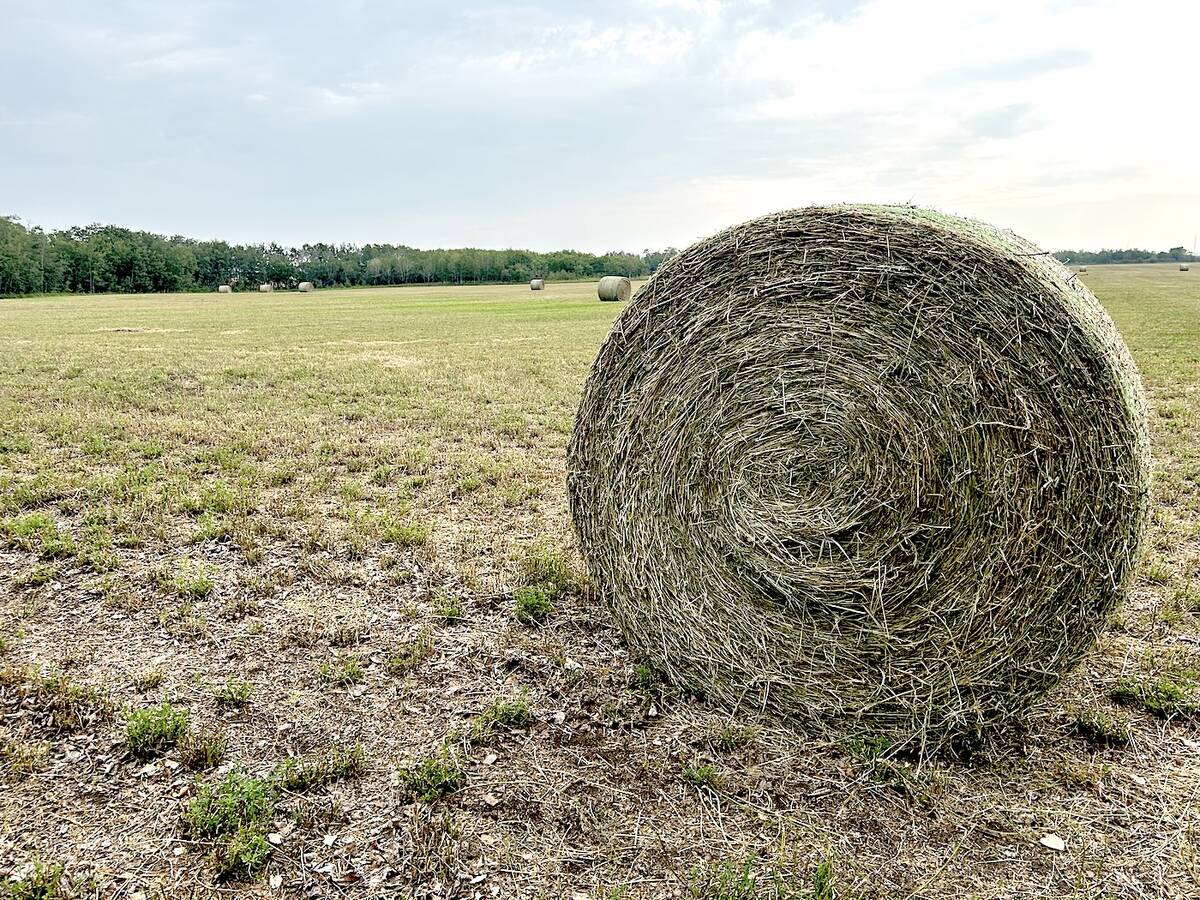
Alberta has adequate feed supplies going into winter
Hay yields across Alberta were varied, but one expert says feed supplies are in strong supply for Alberta producers for the upcoming winter.
“You have to keep in mind that what’s really challenging with these (on-farm trial) commitments is that a lot of this happens during some pretty important production bottlenecks,” said Lewis Baarda, research lead at Farming Smarter, which helps farmers conduct on-farm trials.
“Whatever operation you’re doing, you can expect it to take two or three times longer if you’re doing a trial.”
There may be some confusion about what on-farm trials actually are. Baarda describes them as scientific tests performed at a field scale using field-scale equipment. Efforts are taken to mitigate the impact of topographical, soil, moisture and weather variability that might skew the results.
And as with any scientific test, controls are put in place — something that’s often missing in on-farm trials, Baarda said.
“Farmers are testing things out in their fields but I think in a lot of cases they’re more like beta tests or demonstrations,” he said. “There may not be any statistics or replication: the things we bring in on the science side to say we’ve seen this effect and we’re going to do some calculations to say we’re confident it’s actually an effect of what we’re testing and not something else.”
Whether doing a trial themselves or with help, perhaps the biggest question is whether it’s worth it from a return-on-investment perspective.
“If you think you can cut your fertilizer inputs by 25 per cent by using a particular practice, that’s a pretty powerful incentive to answer that question because a 25 per cent drop in fertilizer inputs is going to have a significant impact on your cost of production,” said Baarda.
Most of the time research priorities will be obvious to producers, he said.
“I think growers, in my experience, have a pretty good handle where the value is in research and what questions are important to them.”
Setting up the trial
Preparation is key, and if done properly can cut down on the in-season time commitment.
“If we have everything prepped and everything ready to go — we know who needs to be where, we know what they need to do, we know what settings we need to have — everything goes more smoothly,” said Baarda.
The keys include replication (the treatments are done in more than one place in the field); a control (if it’s a wheat variety trial, for instance, you would probably compare its performance to a wheat cultivar you normally use); and randomization (in regard to the location of treatments in a field).
“(Randomization is) a way to be more confident that when we see results that they’re a result of whatever it is we’re studying rather than something that is inherent to one part of the field.”
The tested areas should be as uniform as possible.
“Choose a field that is typical for your farm,” he said.
Setting the trial up in strips is a common design, especially for trials focused on seeders. Running strips along the length of the field is a common choice but producers need to be selective of where they take data from, keeping in mind the need for uniformity.
“For strip trials, even if you seed to the edge of the field, typically headlands and outside rounds are harvested first and data is only collected from areas well within the field,” said Baarda.
Field strips don’t necessarily have to be the length of the entire field to be effective, but they do have to be long enough to allow a reasonable imitation of the speed and functionality of field-scale equipment.
“You wouldn’t want to do 20-foot passes with a field-scale seeder because you would never get the tractor up to operating speed,” said Baarda. “You need to run it the way you would when seeding your other acres. That way you can do fewer and shorter passes in 40 acres rather than 160 and still do a field-scale trial.”
For farmers measuring spray variability, one method Baarda recommends is setting aside a part of the field where you can test one spray rate against another in a “checkerboard” pattern.
“In that case you’re turning spray on and off with a variable-rate prescription,” he said.
The need to collect yield data is a no-brainer if you’re measuring the output of a new variety, but chances are you’ll want to see how your treatment has affected yield regardless of the product, rate or practice on trial. For a range of technical reasons, Baarda does not recommend relying on the combine’s yield monitors exclusively. Instead, verify that data by taking weight measurements.
“A weigh wagon, for example, has load cells that let you physically weigh the crop. The yield monitors in combines don’t measure yield based on weight. It’s kind of a subjective measure and is usually not exact.
“When it comes to yields I think you want to weigh wherever possible because I think it’s just a good way to hold (yield monitors) accountable. It’s measurable. You can’t fake a weight.”




